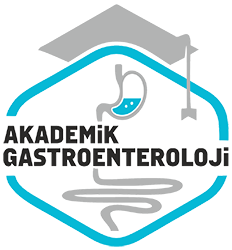Agustos 2025
Hepatit C’de bulaşma algısı ve farkındalık eksikliği: Tanıve tedaviye erişimde kırılma noktaları
Lack of awareness and perception of transmission in hepatitis C: Breaking points inaccess to diagnosis and treatment
- Ana Sayfa
- Sayılar
- Agustos 2025
- Hepatit C’de bulaşma algısı ve farkındalık eksikliği: Tanıve tedaviye erişimde kırılma noktaları...
Antalya Şehir Hastanesi,2İç Hastalıkları Kliniği, Antalya
Özet
ÖZET •Giriş ve Amaç:Bu çalışma, hepatit C virüs enfeksiyonu olan bireylerin hastalık farkındalığı, bulaşma yollarına dair algıları, tedaviöyküleri ve birinci basamak sağlık hizmetleriyle temas düzeylerini değerlendirmeyi amaçlamaktadır.Gereç ve Yöntem:2023 yılında Batı Akdeniz bölgesindeki bir üçüncü basamak merkezde yürütülen tanımlayıcı, kesitsel araştırmaya 18 yaş üzeri 359 anti- hepatit C virüs pozitif birey dahiledilmiştir. Katılımcılarla yüz yüze yapılandırılmış anket uygulanmış; veriler SPSS ile analiz edilmiştir.Bulgular:Katılımcıların %62.7’sinde hepatitC virüs RNA pozitifliği saptanmış, ancak bu grubun %42.2’si tedavi almamıştır. Tedavi almayan hastaların %83.2’si hepatit C hakkında hiçbir bilgiye sahip değildir. Ayrıca bulaşma yolları konusunda yaygın yanlış inanışlar ve aile hekimlerinin hepatit C virüs tarama sürecine sınırlı katkısıgözlenmiştir. Aile hekimini tanıyanların yalnızca %7.8’ine hepatitle ilgili test önerilmiştir.Sonuç:Türkiye’de hepatit C virüs farkındalığı ve tedaviyeerişim hâlâ yetersizdir. Birinci basamak sağlık hizmetlerinin sürece entegrasyonu, toplum temelli eğitim kampanyaları ve refleks hepatit C virüs RNA test stratejilerinin yaygınlaştırılması, hepatit C virüs eliminasyonu hedefi için kritik önemdedir.
Abstract
ABSTRACT •Background and Aims:This study aimed to evaluate the awareness, perceptions of transmission routes, treatment history,and interaction with primary healthcare services among individuals infected with hepatitis C virus.Materails and Methods:A descriptive cross-sectional study was conducted in 2023 at a tertiary center in the Western Mediterranean region of Turkey. A total of 359 anti- hepatitis Cvirus positive individuals aged over 18 were included. Structured face-to-face interviews were performed using a standardized questionnaire.Data were analyzed using SPSS.Results:Among the participants, 62.7% had hepatitis C virus RNA positivity, yet 42.2% of this group had never received treatment. Of the untreated patients, 83.2% reported no knowledge about hepatitis C. Misconceptions regarding transmission routeswere widespread, and the involvement of family physicians in hepatitis C virus screening was limited. Although 75.7% of participants knew theirfamily physician, only 7.8% had been tested for hepatitis by them.Conclusion:Awareness and access to treatment for hepatitis C virus in Turkey remain insufficient. Integration of primary care services into the hepatitis C virus care cascade, public awareness campaigns, and widespreadimplementation of reflex hepatitis C virus RNA testing are crucial for achieving national elimination goals.



